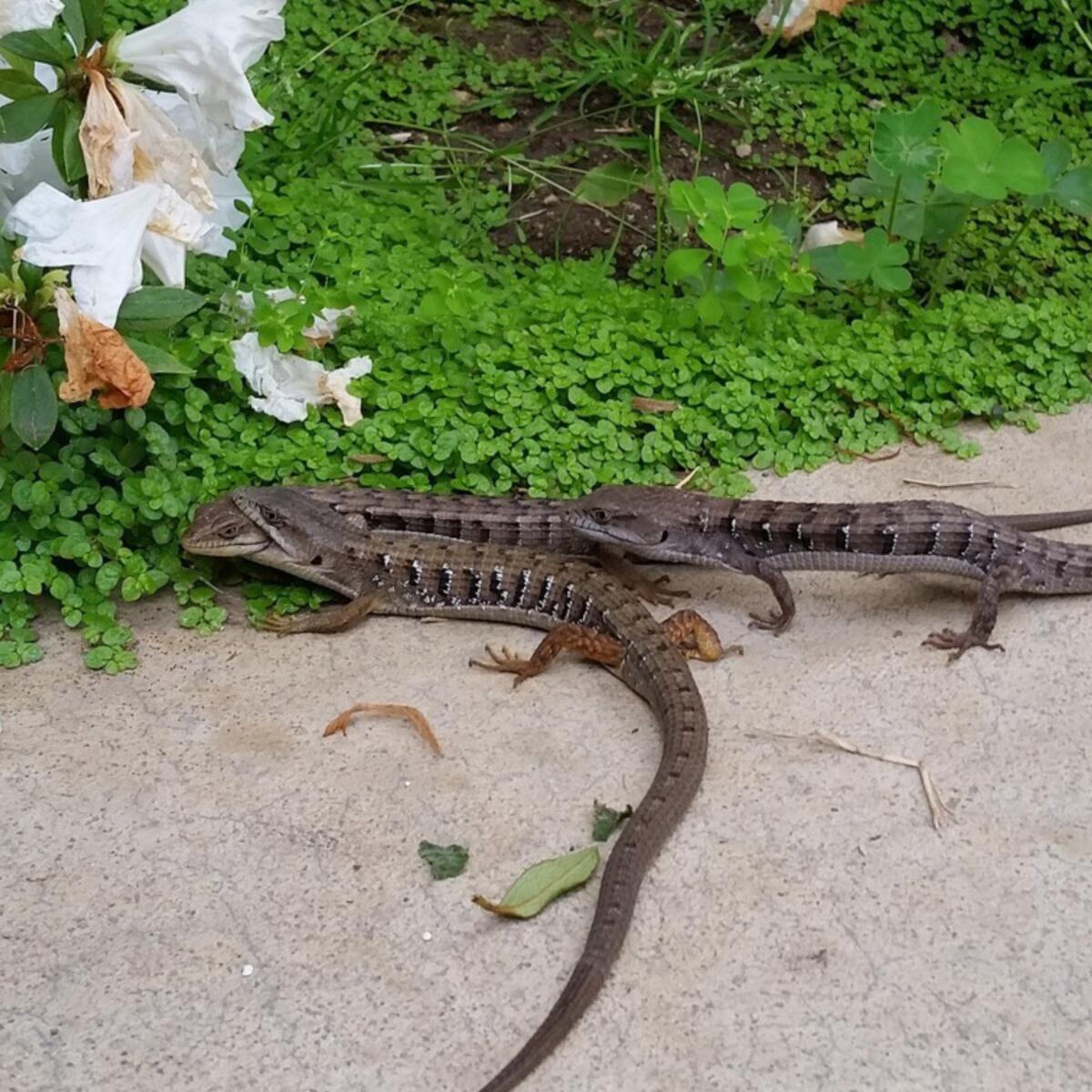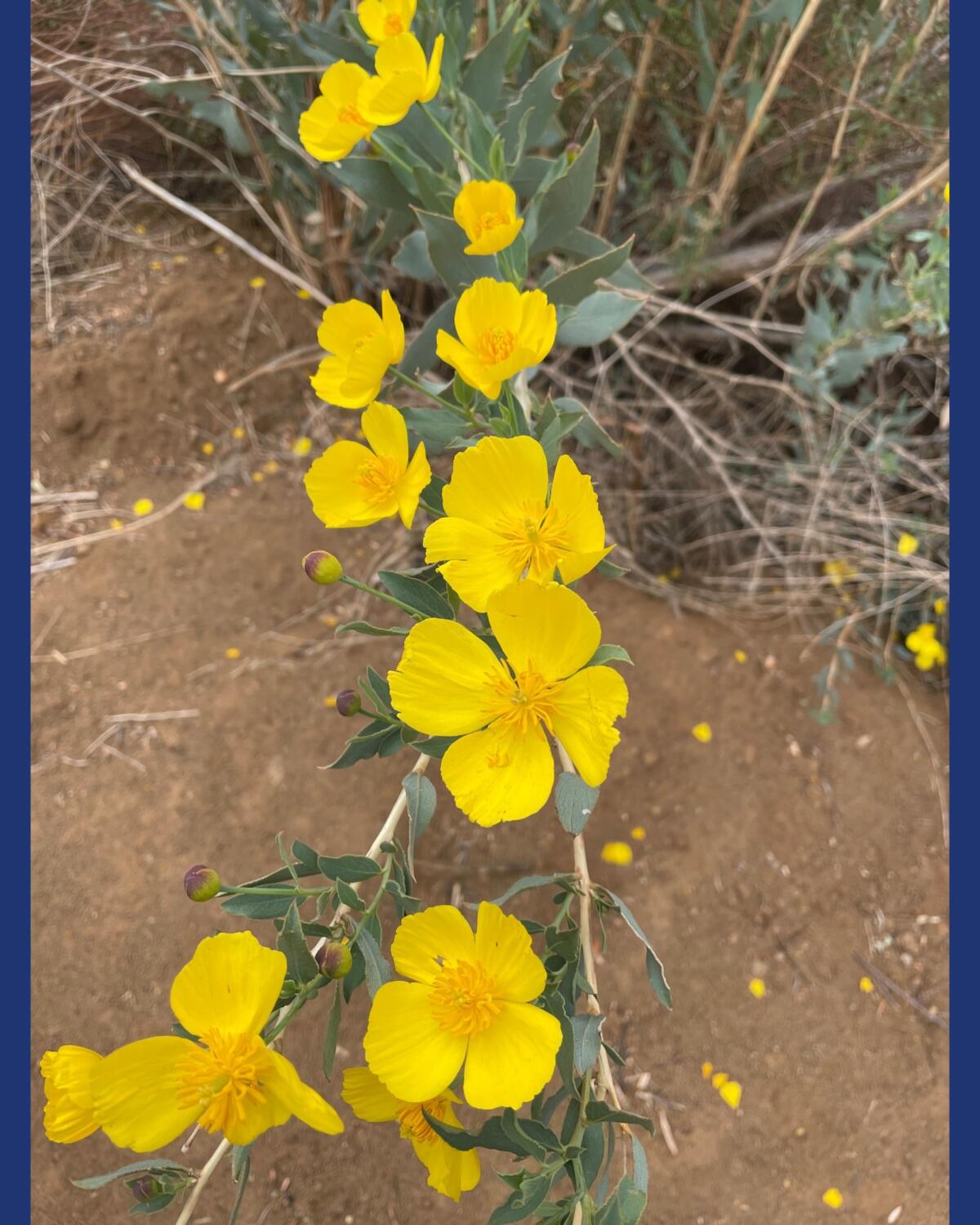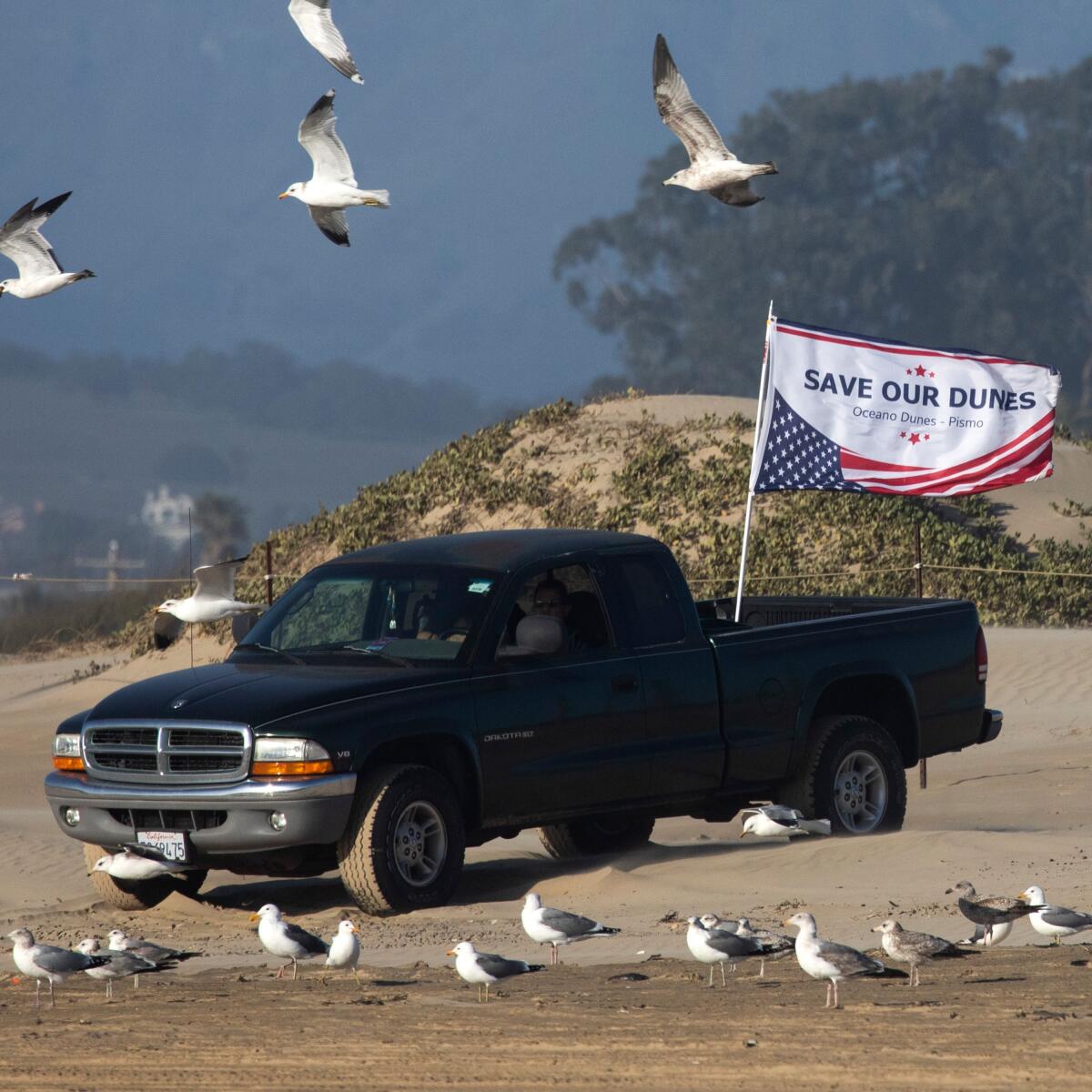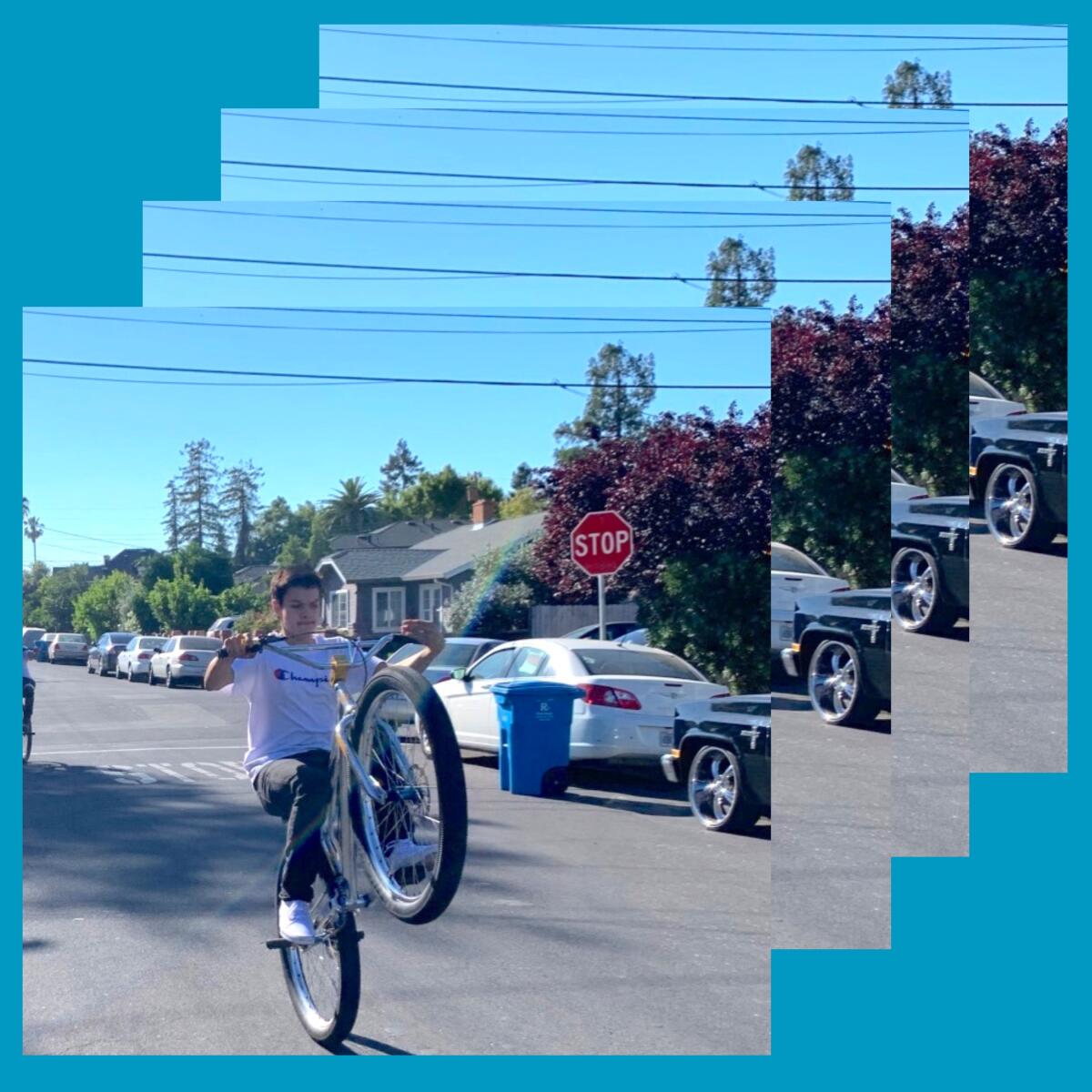Why you should spy on lizards having sex

- Share via
By Mary Forgione
For the record:
8:54 p.m. March 26, 2021This newsletter refers to Mt. Whitney as the highest peak in the continental U.S. It is the highest in the contiguous U.S.
Wecome to The Wild! It’s almost the end of Women’s History Month, a good time to reflect on women in the outdoors. Last week Deb Haaland was confirmed as the first Native American woman to serve as Interior secretary. “A voice like mine has never been a Cabinet secretary or at the head of the Department of Interior,” the New Mexico legislator tweeted on Dec. 17. “Growing up in my mother’s Pueblo household made me fierce. I’ll be fierce for all of us, our planet, and all of our protected land.”
Other women I’m thinking about:
Hulda Crooks scaled Mt. Whitney two dozen times, starting at age 66. She completed her last climb at 91. Crooks, nicknamed Grandma Whitney, holds the record for being the oldest woman to hike up the tallest peak in the continental U.S. (14,495 feet) and the oldest woman to scale 12,388-foot Mt. Fuji in Japan. It took five years for Congress to honor her by naming a peak in the Whitney area for her, Crooks Peak, while she was alive. She died in 1997 at 101.
Kathrine Switzer in 1967 was the first woman to run the Boston Marathon. It’s still shocking to see photos of a race organizer trying to shove her off the course as she covered the 26.2 miles. In 1972, six women entered the New York City Marathon, according to a history by Runner’s World, and sat down in protest when they were told to start 10 minutes before the men. But back to Switzer. In 2015, she started 261 Fearless, a nonprofit (named for her Boston running bib number) that seeks to unite women by creating running clubs and education programs. (Read more here.)
Emma Rowena Gatewood, a.k.a. Grandma Gatewood, in 1955 was the first woman to solo hike the 2,050-mile Appalachian Trail in one season. She was a 67-year-old great-grandmother when she completed the route from Georgia to Maine. Her story, told in a documentary called “Trail Magic,” revealed that she was abused by her husband for decades. Carolyn “Ravensong” (her trail name) Burkhart was the first woman to solo hike the Pacific Crest Trail from Mexico to Canada in 1976. Elsye Walker, trail name Chardonnay, was the first Black woman to complete the triple crown of hiking in 2018: the Appalachian, Pacific Crest and the Continental Divide trails.
Whew, that’s a lot of inspiration.
The must-have

Planning your outdoor adventures for spring and summer? The Times’ comprehensive 2021 L.A. Hiking Guide will inspire you to get out and explore your city and its wild edges — and show you how to get started. Here are our favorite 50 hikes in Southern California. Want a print copy? A limited number of hiking guides are still available in the L.A. Times Store.
3 things to do this week

1. Be on the lookout for mating alligator lizards — and take photos. Don’t start with the “Sex and the City” jokes; this is all about science. Mating season for southern alligator lizards in Southern California usually begins in mid-March, though the recent cool weather may delay breeding. Still you may start to see them along the trail or in your backyard in a reptilian embrace. Little is known about the mating behavior of these creatures, which is why Greg Pauly, curator of herpetology at L.A. County’s Natural History Museum, started a community science campaign five years ago.
That means we can all contribute data, in the form of photos and videos. So far the project has netted 351 observations of mating southern alligator lizards and 57 of northern alligator lizards. What are you looking for? “During mating season, males search out females,” Pauly writes on the museum’s website. “The male bites the female on her neck or head and may hold her this way for several days. Early in the encounter, the two may engage in a bit of a wrestling match (if you see this, please try to get videos). Sometimes, a second male shows up and we get even more interesting observations! About 9% of all observations in our dataset have two males and a female.”
Interesting footnote: Pauly has never caught these lizards in the act. Go to the Natural History Museum’s website to see sample photos and instructions on how to upload and tag photos for the project.

2. Look for bush poppies blooming in the Santa Monica Mountains. Garapito Canyon in Topanga State Park must be one of the quietest places in the Santa Monica Mountains. I’ve hiked its 2.6 miles about three times during the pandemic and rarely met more than four people. That’s not the only reason to go. Right now, bush poppies (also called tree poppy) are blooming, giving the trek a sunny feel. The native bushes, technically Dendromecon rigida, sprout bright yellow petals with an orange center. California lilacs, or ceanothus, are also in bloom with lilac and white flowers. There are many ways to get to this canyon; if you start at the state park, it’s about six miles out and back. More Garapito Canyon info here.

3. Tune in to watch David Attenborough explain what extinction and biodiversity loss means. David Attenborough has taught us a lot about nature over the years. The 94-year-old British broadcaster still has more to say. “Extinction: The Facts” is his latest PBS program, which looks at the scope of species loss (up to 1 million plant and animal species may be extinct within decades, according to a 2019 U.N. study) and what choices we can make to reverse the trend. He uses the example of Rwandan mountain gorillas and the conservation efforts that offset their extinction decades ago. The show will be broadcast on KCET at 9 p.m. April 4 and on PBS SoCal at 7 p.m. April 7 and on related platforms. Here’s an “Extinction” trailer.
The must-read

It’s a saga that has been going on since 1982. Off-roaders and ATVs have been riding on the beach at Oceano Dunes near Pismo Beach for decades. Now the California Coastal Commission has sided with snowy plovers and least terns that nest on the Central California beach. The agency last week voted to ban vehicles over the next three years. “The California coast won,” commission chairman Steve Padilla told The Times. “Fundamentally, California law doesn’t allow for that kind of use in environmentally sensitive areas.” Off-road vehicle lovers vowed to appeal the decision, which affects the eight miles of fragile coastline. Read the full story here.
Here are Southern California sites where off-road vehicles are welcome:
Hungry Valley State Vehicular Recreation Area in the Tejon Pass north of Gorman;
Ocotillo Wells northeast of Anza-Borrego Desert State Park;
Glamis-Imperial Sand Dunes in El Centro; and
Wildomar in Murrieta.
Cool stuff

Nature guides help sort out the world around us. The National Audubon Society has been publishing bird guides since the 19th century. Now the organization’s “Birds of North America” is getting an upgrade for the first time in more than two decades. Updates include four or five photos for each of the 800 species included in the guide plus the addition of conservation status and essays that add context to the world of birds. It also updated “Trees of North America,” detailing 520 species. The books cost $49.95 and $39.95, respectively, and will be released April 6. Find more info at Audubon.
P.S.

One thing I never thought of doing during the pandemic: pop wheelies. Yep, I’m talking about the bicycle feat that separated the cool kids from everyone else in elementary school. Kim Cross immersed herself in a personal quest she called Project Wheelie. “It’s a juvenile pursuit for a professional writer with a mortgage and a 12-year-old boy,” she writes in Outside magazine. “There are more productive uses of my time. But maybe, just maybe, there’s some value in tilting at your own quixotic windmill.” What’s so engaging about Cross’ story is how strategically she approaches her goal, how detailed she gets about the moves, and how honest she is about getting banged up — all set against the backdrop of the sameness of pandemic days. Next time you think about giving up on something, read “My Month of Doing 100 Wheelies a Day.”
Send us your thoughts
Share anything that’s on your mind. The Wild is written for you and delivered to your inbox for free. Drop us a line at TheWild@latimes.com.
Click to view the web version of this newsletter and share it with others, and sign up to have it sent weekly to your inbox. I’m Mary Forgione, and I write The Wild. I’ve been exploring trails and open spaces in Southern California for four decades.

Sign up for The Wild
We’ll help you find the best places to hike, bike and run, as well as the perfect silent spots for meditation and yoga.
You may occasionally receive promotional content from the Los Angeles Times.




